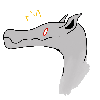HOME | DD
 Enothar — Subject: BA-XX81
Enothar — Subject: BA-XX81

#characterdesign #creaturedesign #dark #horror #macabre #monsterdesign #nautilus #octopus #scp #scpinspired
Published: 2019-12-03 04:26:56 +0000 UTC; Views: 24401; Favourites: 707; Downloads: 61
Redirect to original
Description
The latest entry in my collection of SCP-inspired creations - using the eighth prompt in the 30-Monster-Challenge - "Octopus."BA-XX81
Retrieved from Japan, this anomaly was found in poor condition by a group of urban explorers, along with the other objects found at the site. The location - an abandoned residential complex - had been fitted with a large, reinforced water tank that housed the then-dormant anomaly, as well as a variety of medical tools and apparatuses. While more recent than the surrounding structure, all equipment appeared as if it had not been used in some time, with much of it no longer functional. The anomaly itself was eventually confirmed as alive when the group, in the process of investigating and playing with the disused equipment, disturbed it by prodding it with a broom handle lowered into the tank.
Containment of this anomaly consists of a large, reinforced acrylic tank, which is to be supplied with a low-temperature seawater solution with high-grade aquarium filtration. In the event of ink being released, water, substrate, and filters are to be regarded as hazardous material, and appropriately scrubbed and/or disposed of. Feeding consists of releasing live fish and/or crustaceans into the aquarium, as it has been noted that the anomaly feeds very irregularly, and it will not feed if it is aware it is being observed, either withdrawing or discarding its food entirely. The tank and observation area are to be lit using only red and infrared lighting, as any other light appears to cause distress in the anomaly; it seems to be incapable of perceiving red light. Infrared cameras and microphones are installed throughout the aquarium for observation, and more recently, speakers have been added since communication was established.
Testing has indicated that this anomaly is comprised of primarily human genetic material, with many of its structures - bone, muscle, and soft tissues - being of a similar composition and density to those found in the human body despite their obvious difference in arrangement (and in some cases, function). Though it is incapable of speech, microphones have picked up a variety of sounds emitted by it, typically when it does not perceive any observers. Such sounds have so far included clicks, hums, and on one occasion, a high-pitched wail that could also be heard through the external microphones. Communication with the anomaly has only been established with a select few individuals among the staff, and is carried out in the form of “yes/no” questions. Answers are provided via flashing small luminous spots on its flanks, near the top of its “ribcage.” This ensures that answers may still be perceived even when the anomaly chooses to keep its distance from the main viewing window, or otherwise withdraws. It is extremely selective about who it speaks with, and often will refuse to communicate if anyone else is present. Even with communication established, however, it has not been forthcoming with answers regarding its nature or its origins, often becoming distressed when presented with such questions.
If it becomes overly stressed or startled, the anomaly may release a dark, blue-black fluid into the water in a manner similar to cephalopods. However, testing of this “ink” has indicated several unknown compounds, along with a substance similar to human bile. When exposed to living animal tissue, it will adhere and bond to it, staining skin, muscle, and bone alike with a dark blue pigment. This pigment is capable of spreading through multiple layers of tissue, with the extent of the discoloration being dependent on the concentration of the ink, the duration of exposure, and the density of the exposed tissue. This coloration persists even if the affected tissue is damaged and subsequently healed, indicating that the substance bonds to subjects on a cellular level.
Other physical symptoms of exposure have included: muscle tremors, numbness, or phantom sensations in the affected area; hair loss on exposed skin; and in one instance, visual hallucinations in a subject whose eyes had been exposed to contaminated water. Long-term studies have also shown affected individuals to experience longer-than-average periods of REM sleep, with dreams often described as being consistently “unsettling.” While the removal of affected tissue has proven effective at alleviating most of the physical symptoms, sleep patterns will remain disrupted.
Note: The duration of REM sleep, along with the number of hours spent asleep, has been observed to gradually increase over time in long-term study subjects. Research is ongoing.
As usual, let me know what you think! ^_^
And if you have any other ideas for a creature such as this, let me know!
Related content
Comments: 45

👍: 0 ⏩: 1

👍: 1 ⏩: 1

👍: 0 ⏩: 1

👍: 1 ⏩: 1

👍: 0 ⏩: 0

👍: 0 ⏩: 0

👍: 1 ⏩: 0

👍: 0 ⏩: 0

this thing probably inspired the myths of the Akkorokamui.
👍: 0 ⏩: 0

👍: 0 ⏩: 0

Man I wasn't expecting a squid girl, but it looks phenomenal!!! Nautiluses are definitely a win for me!!!
She(he, it?) is kinda cute in a weird, sad, kinda way.
👍: 0 ⏩: 1

👍: 0 ⏩: 1

👍: 0 ⏩: 0

I can't help but feel sorry for this sweetheart - at least she's somewhere safer.
👍: 0 ⏩: 1

👍: 0 ⏩: 0

Very cool! I love creatures like this theyre so fascinating and your art is just fantastic! I dig the nice clean lines
👍: 0 ⏩: 1

I love how the "shell" of the creature resembles a ribcage and vertebrae. Curious that is shares human DNA. That, combined with the fact it gets distressed when asked about its origin, makes me wonder if it was human once.
👍: 0 ⏩: 1

Sign language would seem an obvious direction to take for more elaborate communication. Find a simple way to give it pleasure and reward it for making the effort to learn.
👍: 0 ⏩: 1

👍: 0 ⏩: 1

Maybe provide it with various toys and even musical instruments to experiment with. A touch pad and keyboard that works underwater as well. There’s lots of options. If a dolphin can figure out how to use a specialized tool, this creature should be able to use any waterproof version of our tools and toys.
👍: 0 ⏩: 1

👍: 0 ⏩: 0

👍: 0 ⏩: 0

👍: 0 ⏩: 0

Description: Doesn't really like being in contact with people
Me: it needs a hug
👍: 0 ⏩: 1

👍: 0 ⏩: 0

👍: 0 ⏩: 0

One of the most original merpeople designs I've seen.
👍: 0 ⏩: 1

👍: 0 ⏩: 1

👍: 0 ⏩: 1

👍: 0 ⏩: 0

👍: 0 ⏩: 1

👍: 0 ⏩: 1

👍: 1 ⏩: 0























